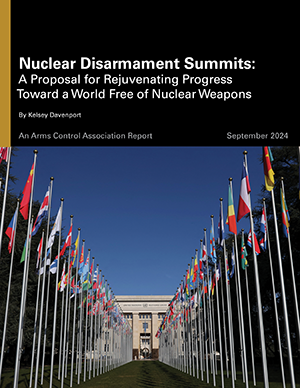The failure to abolish nuclear weapons is due in part to the limitations of the current nuclear disarmament architecture. The complex array of treaties, voluntary multilateral initiatives, and negotiating forums dedicated to fostering action toward the verifiable elimination of nuclear weapons has produced many important initiatives and agreements designed to reduce nuclear risks, curb proliferation, and slow nuclear arms competition. In recent years, however, these instruments have proven to be inadequate in facilitating the progress and actions necessary to address new challenges to disarmament, which include more competitive and less cooperative relations between major nuclear-armed states and a lack of political will to pursue bold, creative steps to reduce nuclear risk and reverse the buildup of nuclear weapons capabilities.
Russia’s full-scale invasion of Ukraine in 2022 and President Vladimir Putin’s irresponsible nuclear saber-rattling further exacerbate the challenges of making progress on the elimination of nuclear weapons. Russia’s actions over the past two years, such as its decision to block the adoption of the nuclear Nonproliferation Treaty (NPT) review conference final document in August 2022, demonstrate how one state can exploit structures and processes in existing forums to hold hostage progress on disarmament and nonproliferation. Moscow’s actions underscore the necessity of new strategies to reduce nuclear risk and advance disarmament in the short term. Additionally, the existing architecture is not well suited to integrate the three states that possess nuclear weapons that are not party to the NPT (India, Israel, and Pakistan) with multilateral nuclear disarmament efforts. Although some forums that focus on disarmament include these states, the structures and processes of these bodies do not offer the flexibility and creativity necessary to make progress in the current geopolitical environment.
A new series of disarmament summits modeled after the highly successful nuclear security summit (NSS) process could inject much-needed momentum and creativity into the existing architecture. A carefully calibrated disarmament summit process could bypass some of the structural and political factors that have slowed progress on efforts to achieve a world free of nuclear weapons. Given the geopolitical rifts exacerbated by Russia’s invasion of Ukraine, this new approach emphasizing voluntary national and multilateral commitments would mitigate the extent to which one state can block progress on disarmament. Additionally, disarmament summits could generate political pressure to push states to take bolder actions to reduce nuclear risk.

